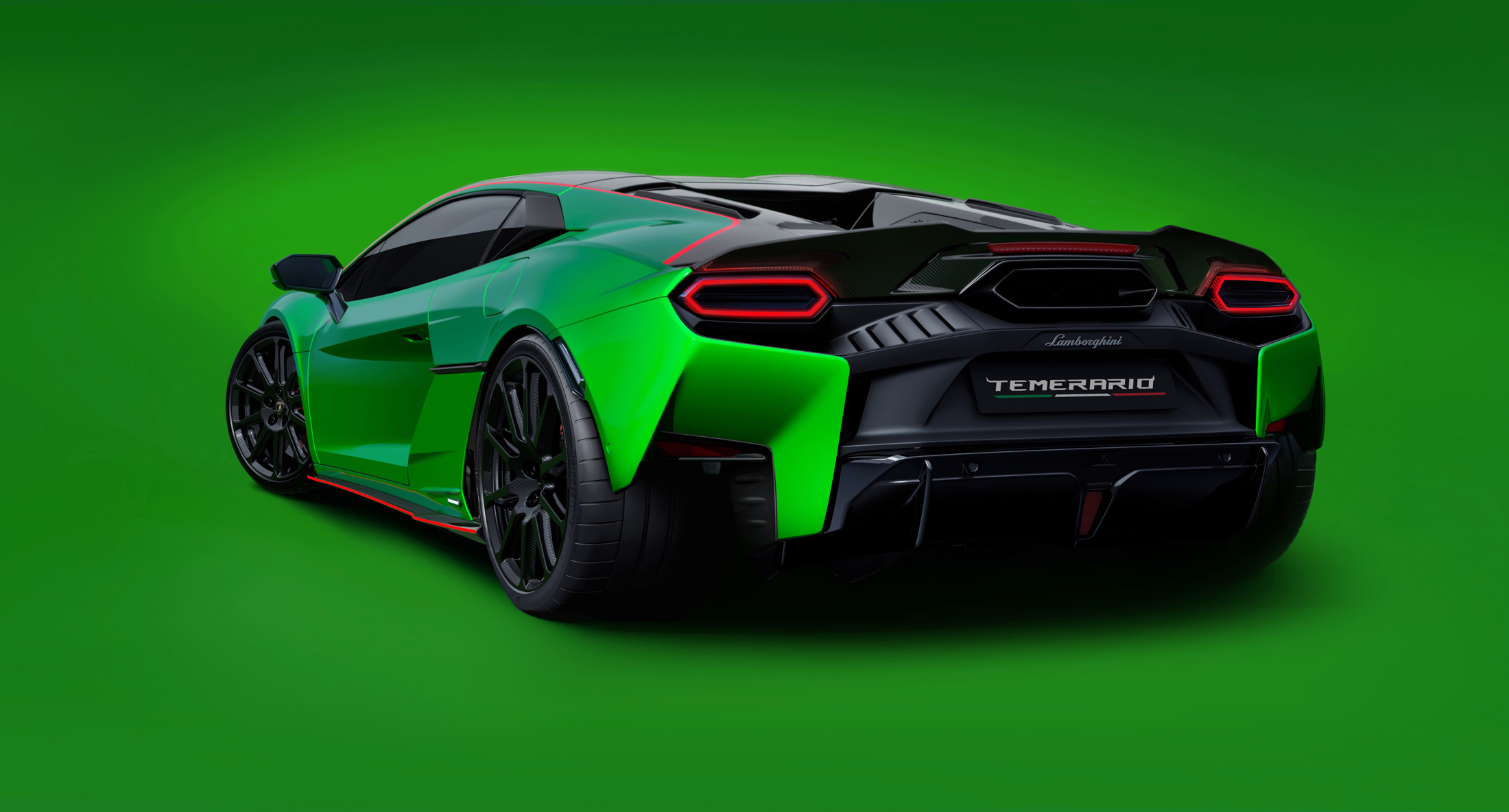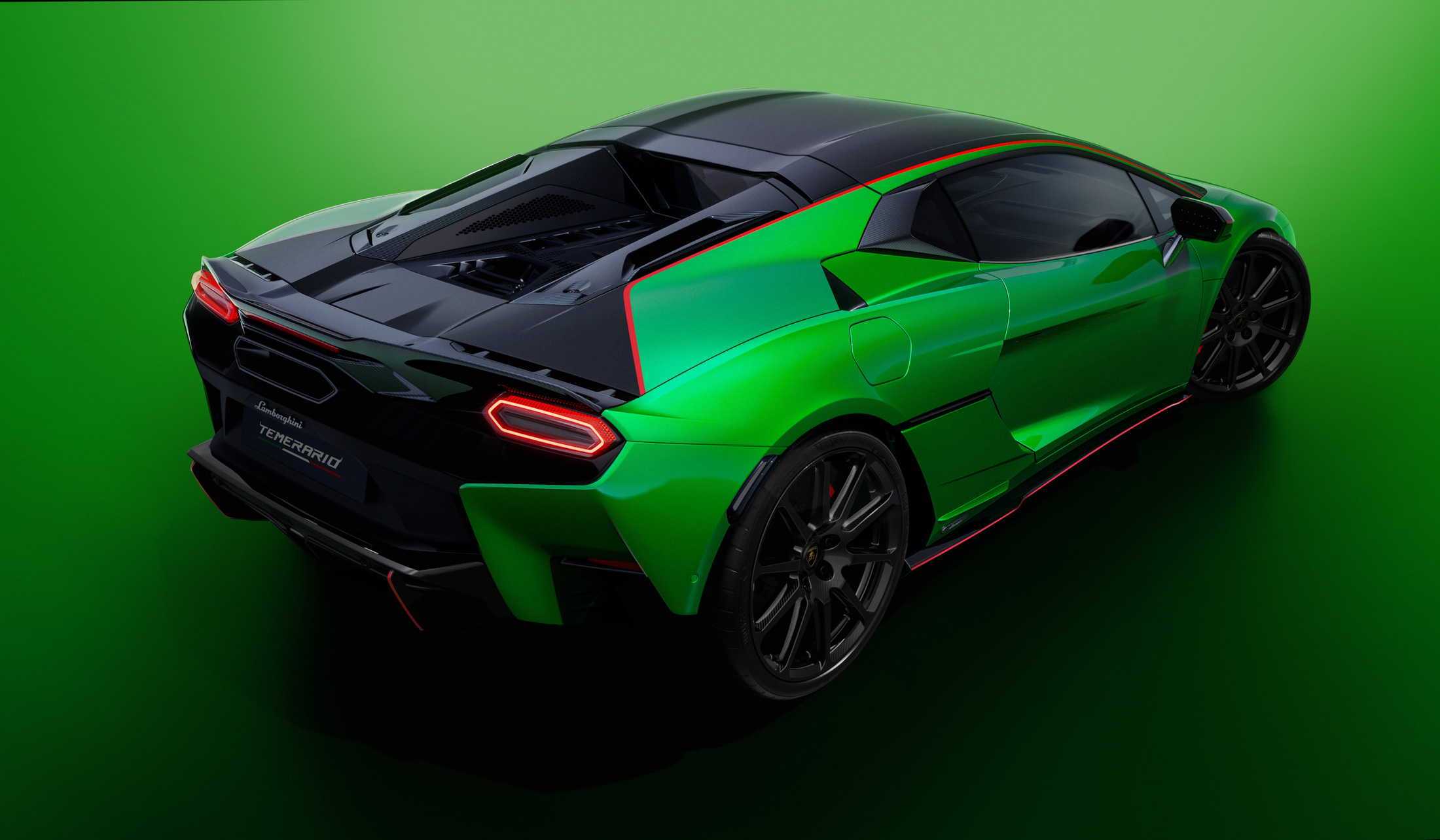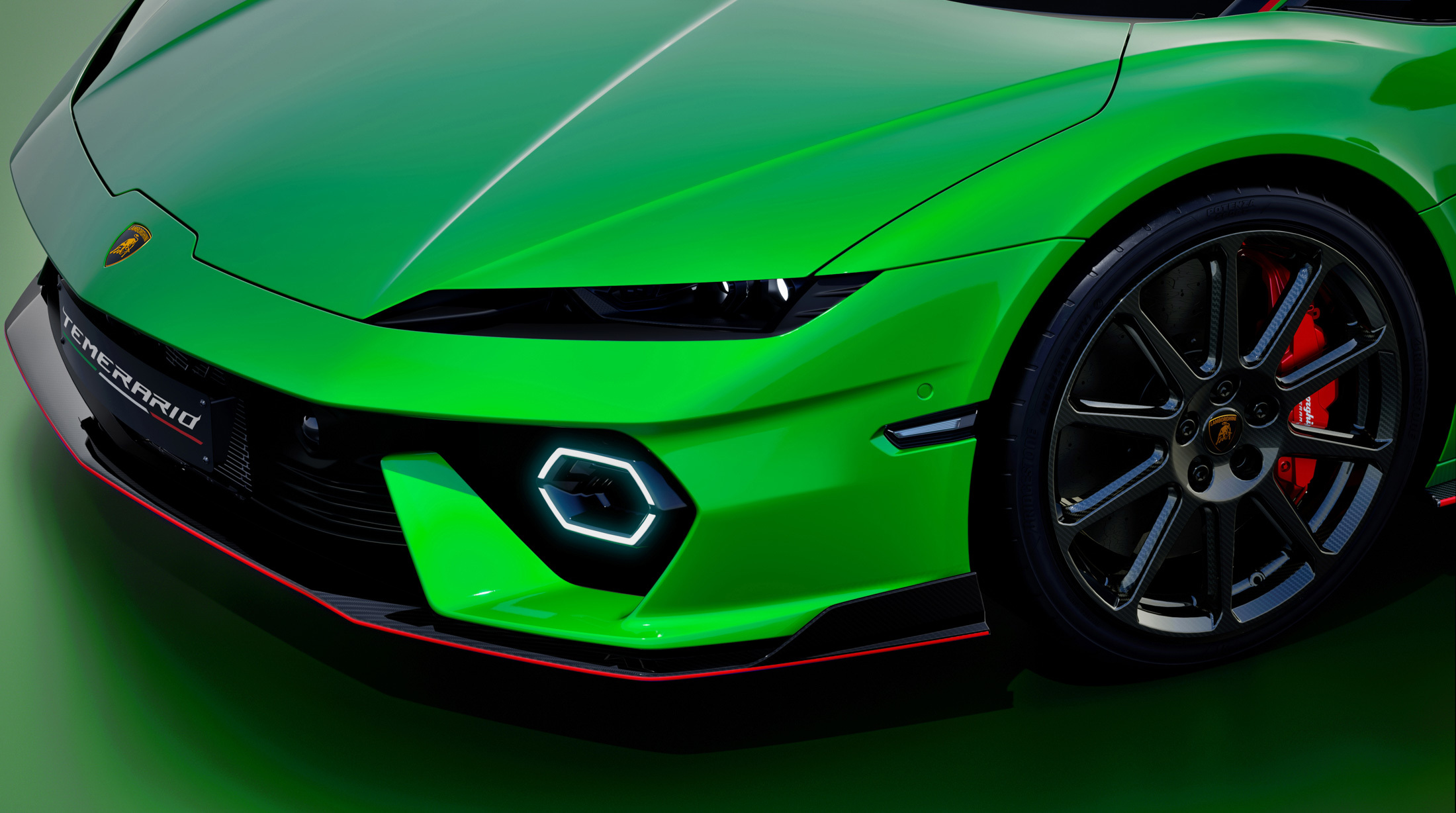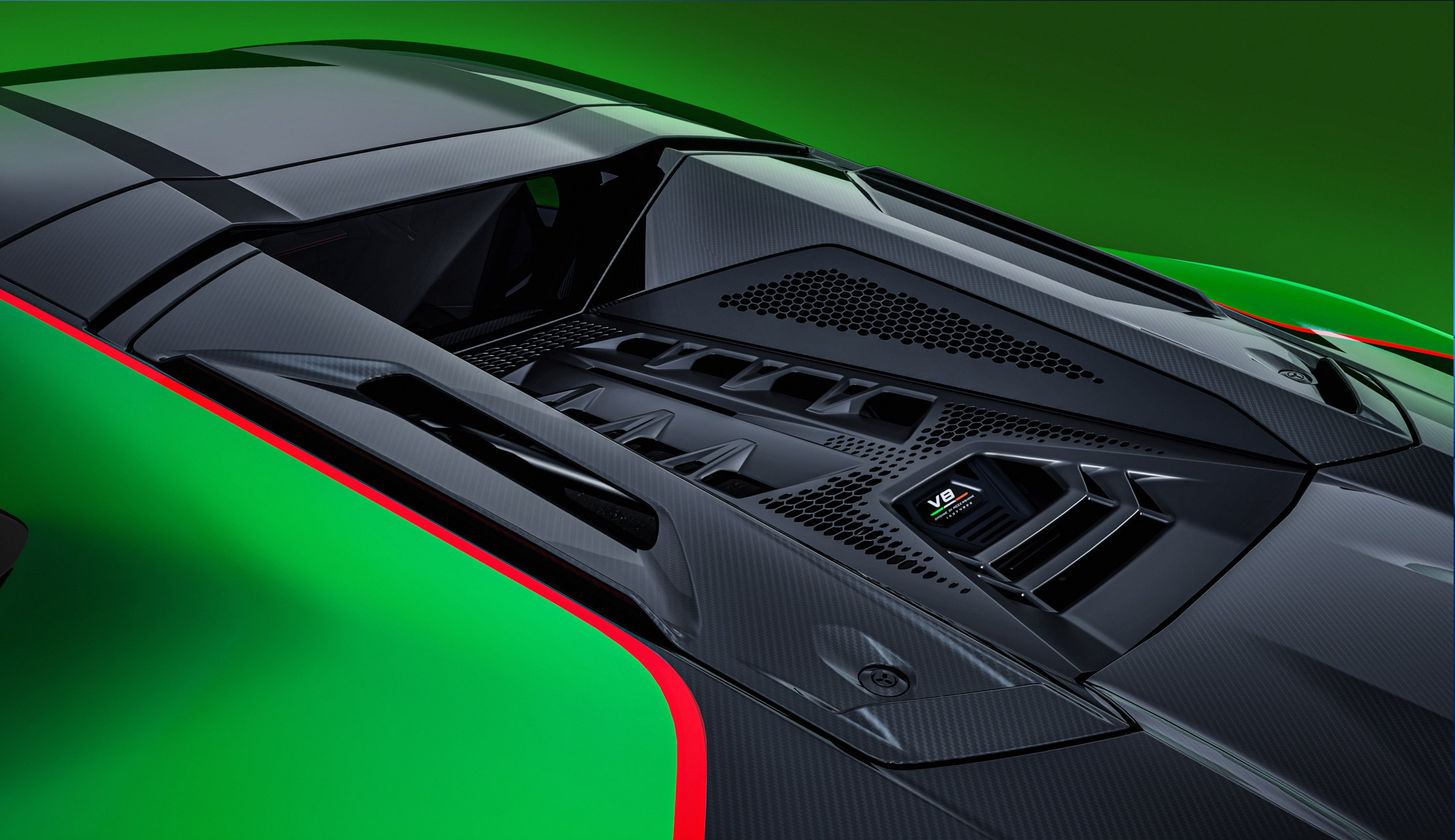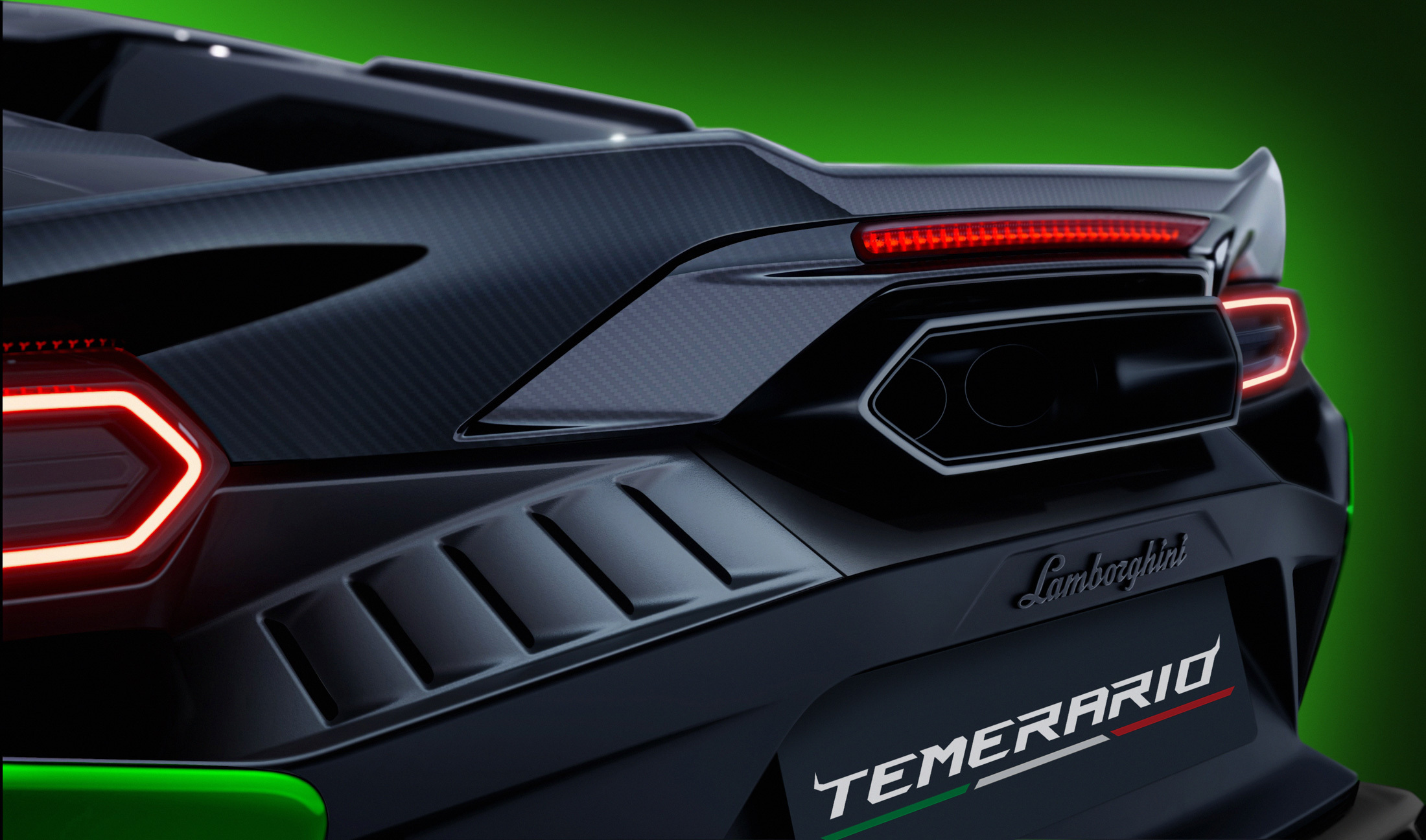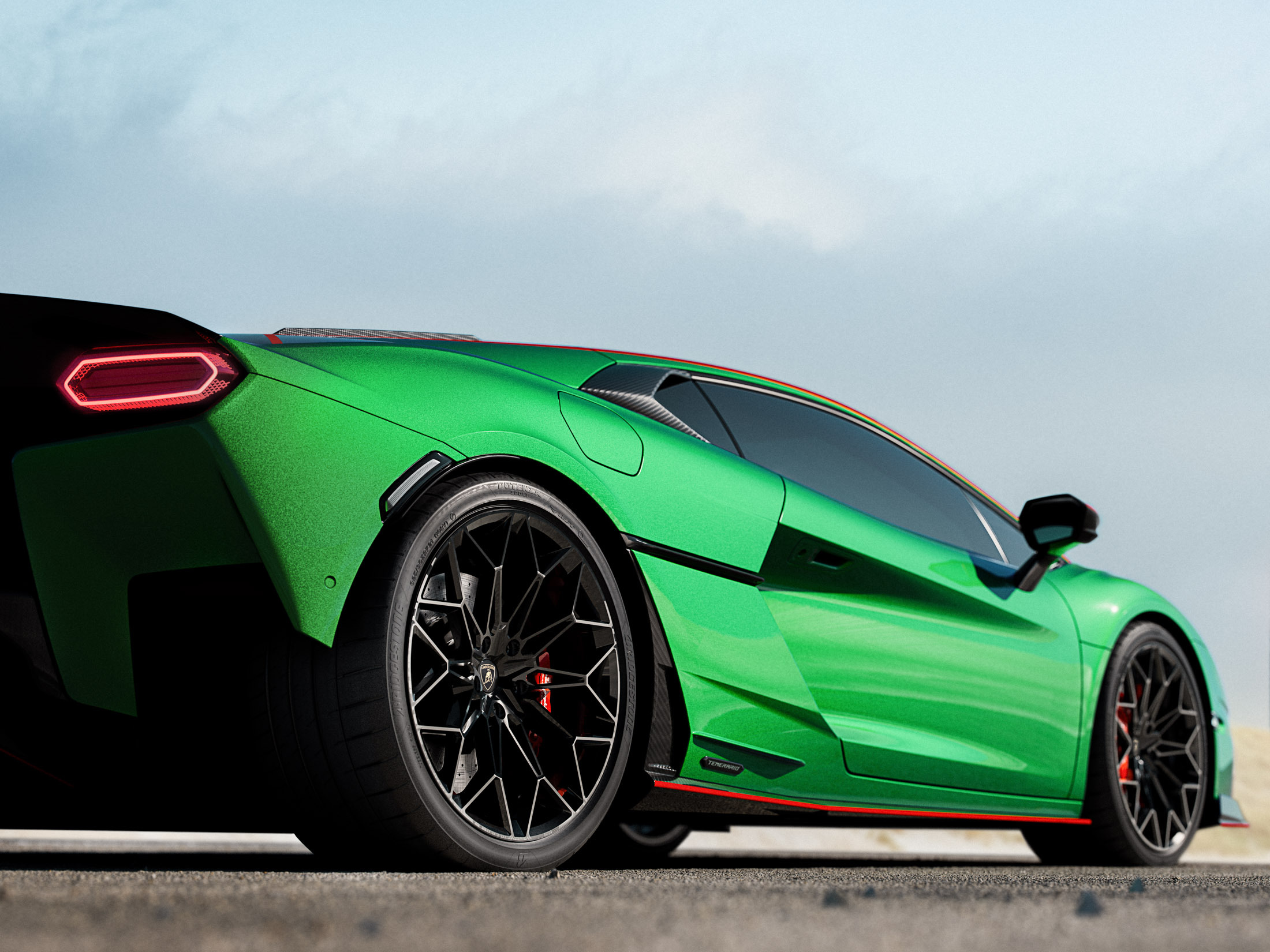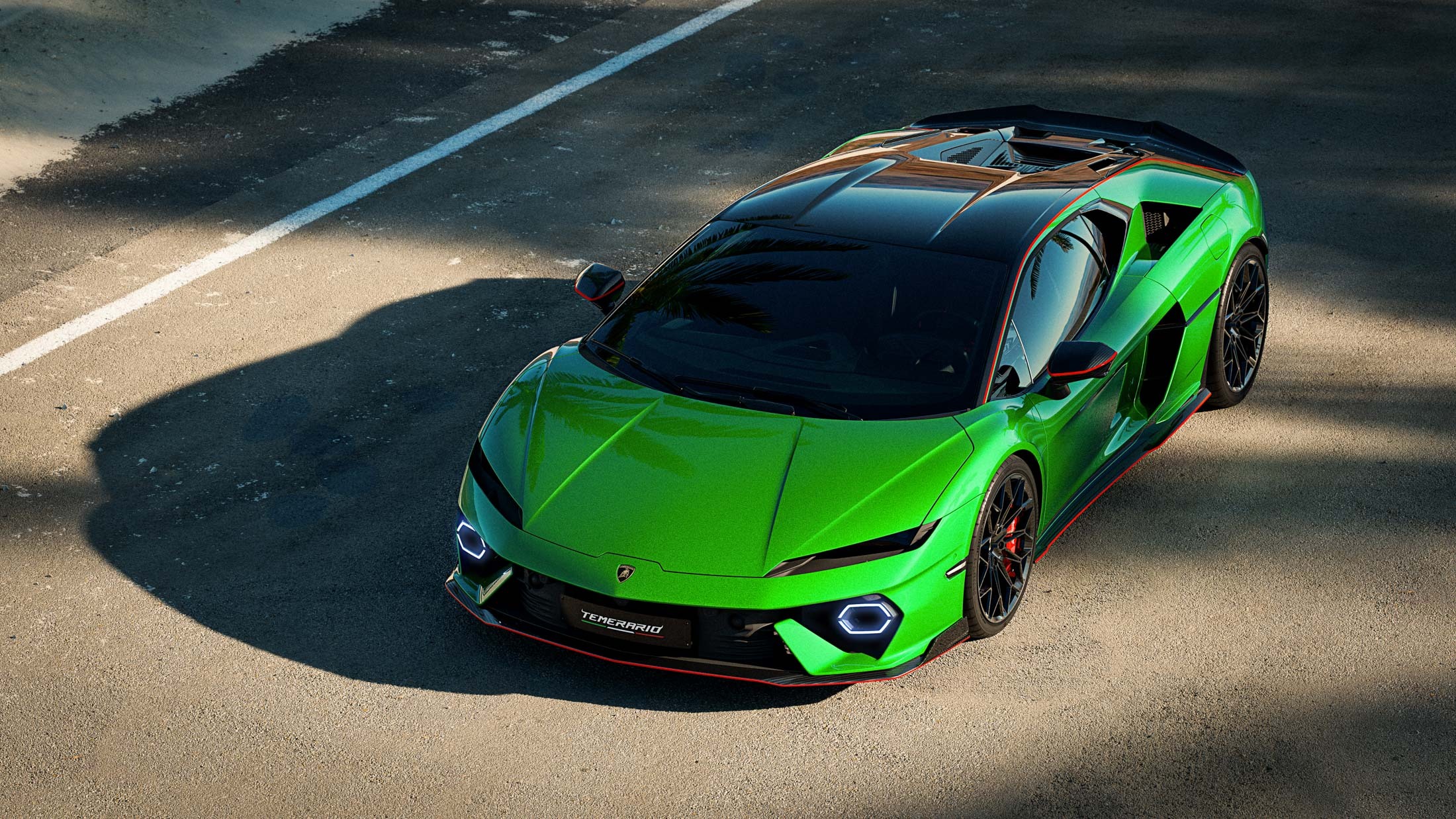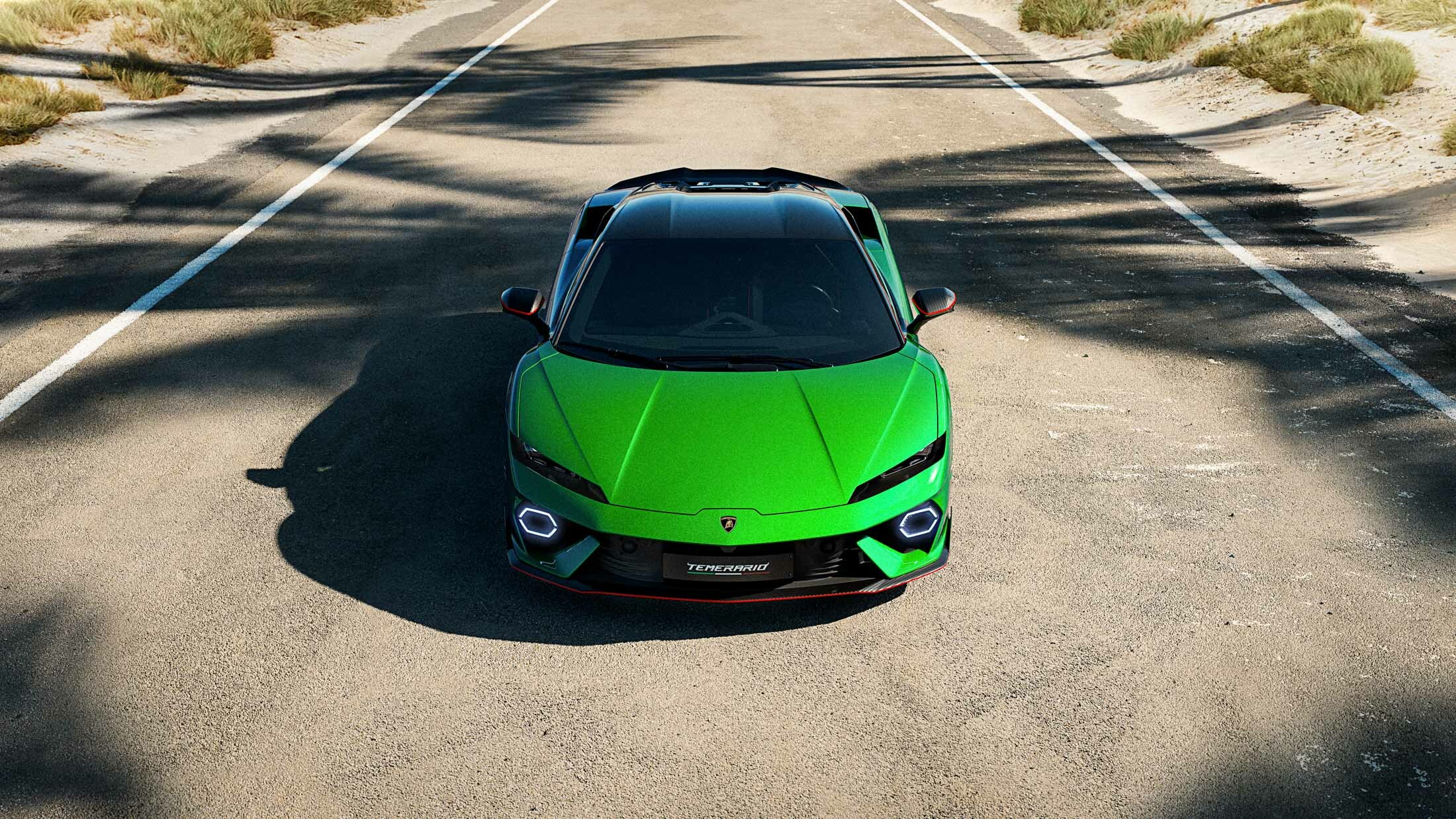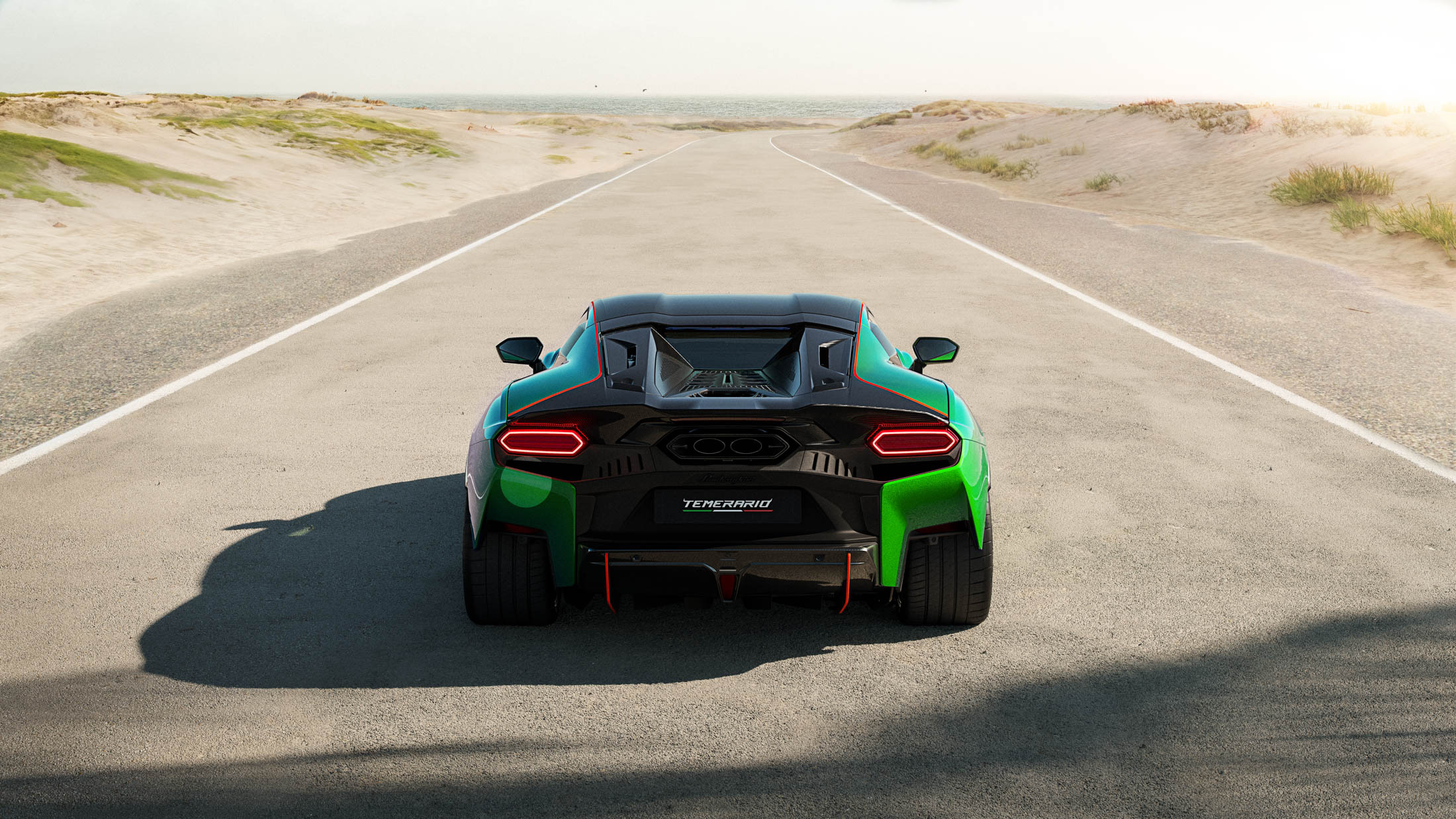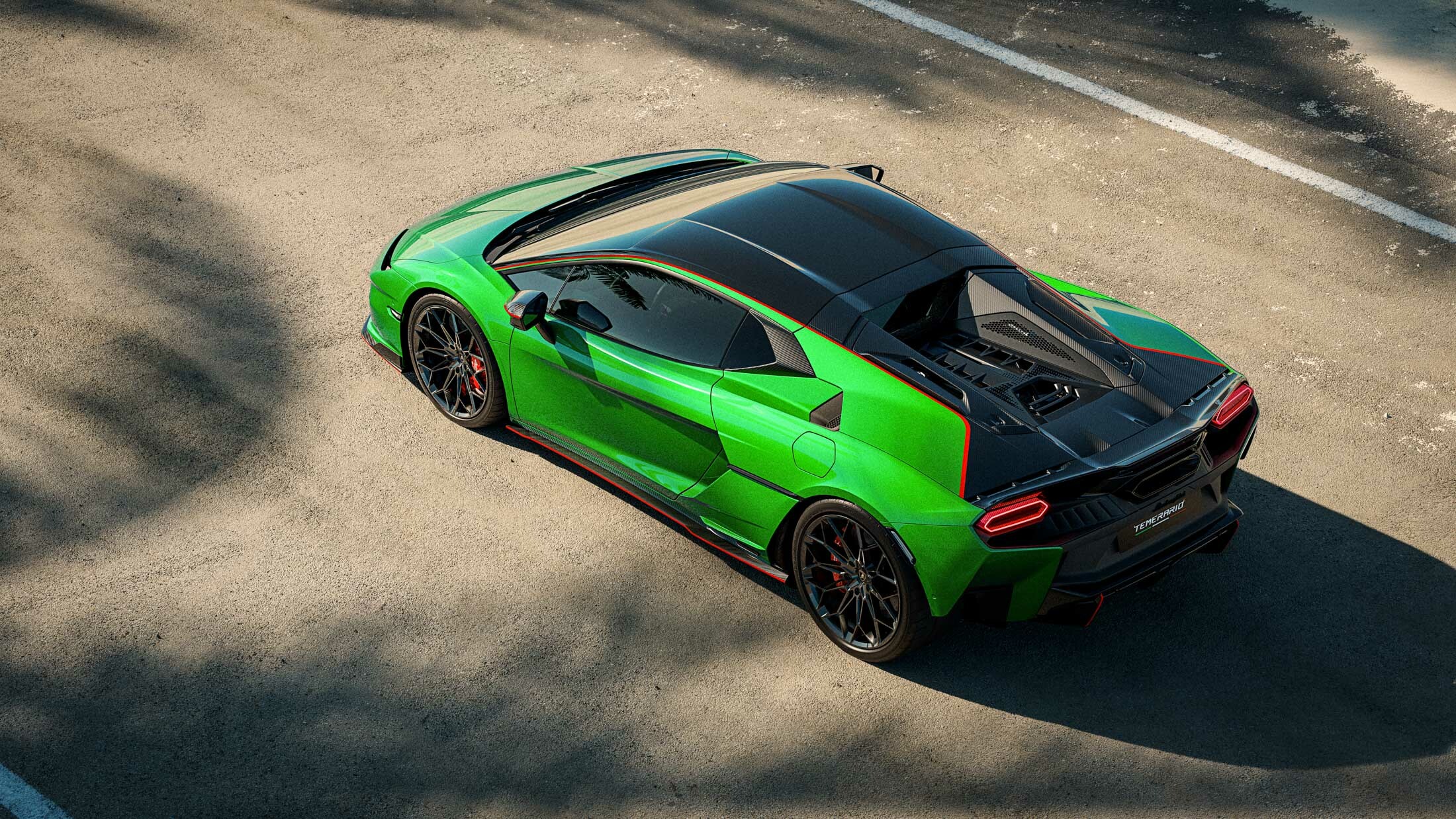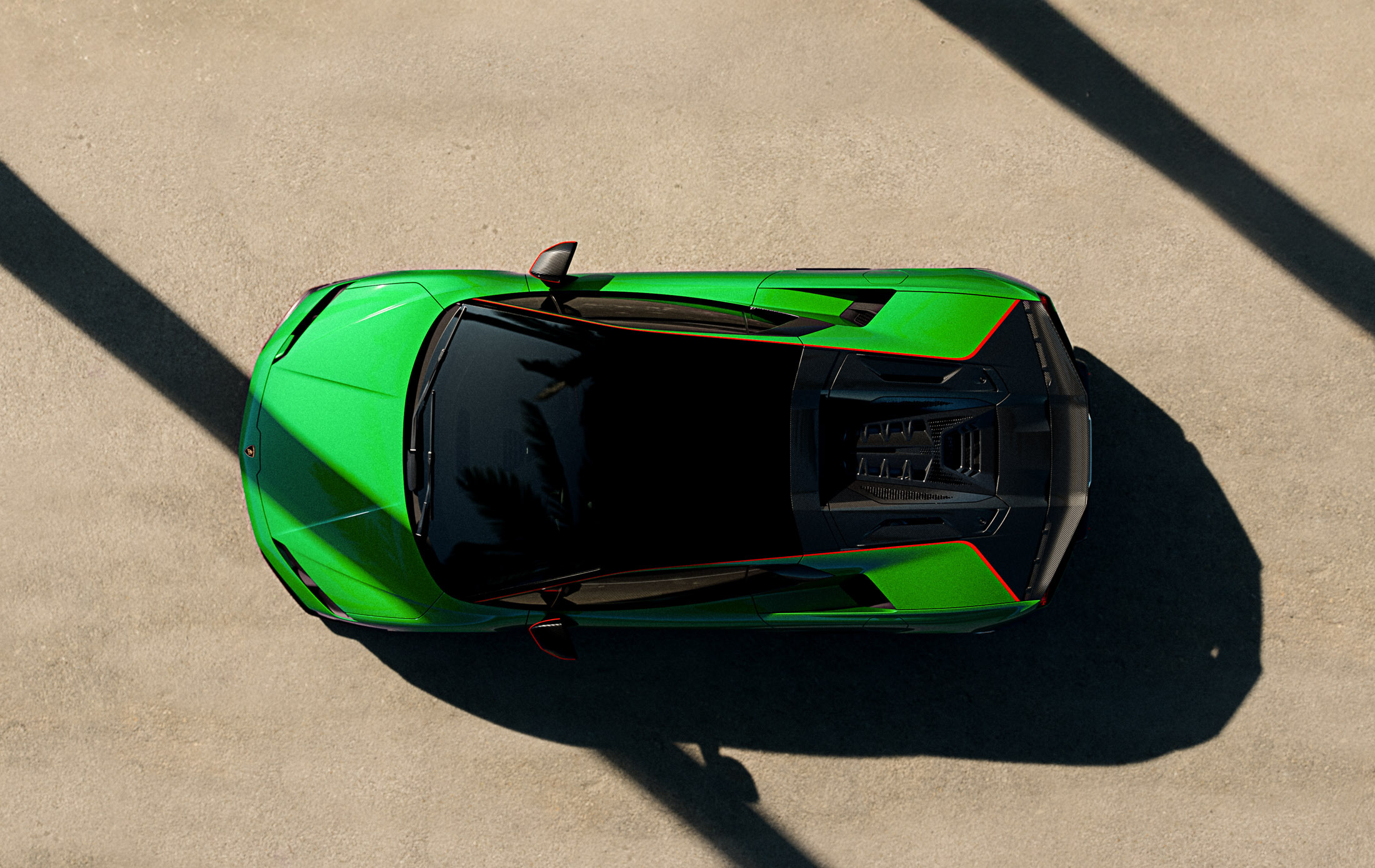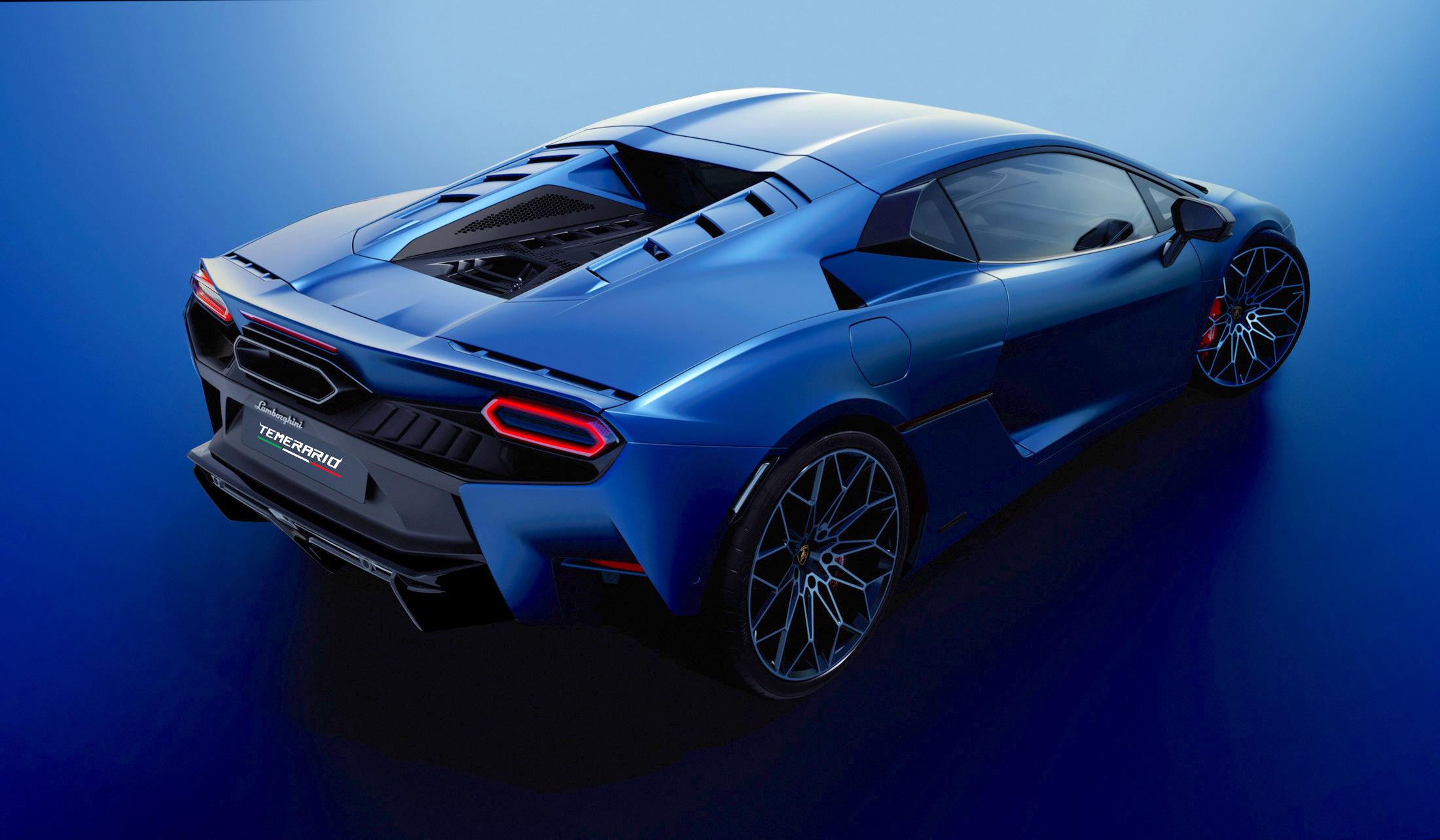- Lamborghini has revealed its Huracan replacement, the V8-hybrid Temerario, at Monterey Car Week.
- The AWD plug-in hybrid supercar features three electric motors, revs to 10,000 rpm, and develops 907 hp.
- Zero to 62 mph drops from 2.9 to 2.7 seconds despite the curb weight ballooning by almost 600 lbs.
Lamborghini’s baby supercar is all grown up. The Huracan is dead, its place in the lineup taken by the all-new Temerario: a triple-motor V8 PHEV supercar with almost 45 percent more power than the mid-engined V10 machine it replaces.
The Huracan, which debuted way back in 2013, stuck close to the template laid down by the earlier Gallardo, but the car world has changed beyond recognition in the last 10 years, so the Temerario is a very different animal, even if it doesn’t necessarily look it.
Related: Zagato’s Reskinned Lamborghini 5-95 Heading To Monterey
Lamborghini’s determination to cut emissions while boosting power, and electrify every model in its portfolio, means the Huracan’s 5.2-liter V10 had to be pensioned off and a turbocharged replacement drafted in. When Ferrari did the same to its naturally-aspirated V8s in the middle of the last decade the result was an engine with masses more power and torque, but one that sounded much less fun and lost 1,000 rpm from its redline. Lamborghini was determined not to make the same mistake.
So yes, the Temerario’s V8 gives away two cylinders and some turbo-free purity to the mill whose shoes it fills. But Lamborghini didn’t take the easy option and dropped in a hotted-up version of the same 4.0-liter cross-plane crank V8 used in countless other VW Group products, including its own Urus SUV.
Two turbos, 10,000 revs

Instead, the Temerario gets its own twin-turbo 4.0-liter V8. It shares a hot-vee turbo configuration with the Urus V8, but only the Temerario’s engine gets a proper supercar-style flat-plane crank. And while the ordinary VW Group’s V8 has a perfectly square 86 x 86 mm bore-to-stroke ratio, this new L411-code V8 has a 90 mm bore and 78.5 mm (3.54 x 3.09 in) stroke – one of the key reasons it’s able to wind to a crazy 10,000 rpm.
That would be an insane speed for most naturally aspirated engines, but it’s unheard of for a production turbo motor. Lamborghini promises the new V8 sounds more exciting than most turbo engines do, and even says it’s purposely designed with some vibrations that pass through to the car body and seats from the engine to intensify the sensory experience.
And to make sure that you get to kiss that five-digit limiter again and again without the Temerario‘s engine doing its best nail-bomb impression, this new L411 V8 has a bunch of trick materials and technologies designed to withstand huge rotational forces. Stuff like a motorsport-grade cast aluminum crankcase, titanium conrods, and valve followers coated in something called DLC (Diamond Like Carbon) and built to be safe at 11,000 rpm.
907 hp and no turbo lag

The combustion engine alone makes 789 hp (800 PS) from 9,000-9,750 rpm, compared with 631 hp (640 PS) at 8,000 rpm for the old Huracan Evo. Torque? The V8’s turbo-assisted 538 lb-ft (730 Nm) wipes the floor with the old V10’s 443 lb-ft (600 Nm), even without factoring in the powertrain’s three 110 kW (148 hp / 150 PS) electric motors.
Two live up front to make the Temerario all-wheel drive and provide a torque vectoring function, while also turning it into a front-wheel drive EV in Citta (city) mode. A third motor mounted between the V8 and the new eight-speed transmission functions as a starter generator and fills in the torque curve with up to 221 lb-ft (300 Nm), supposedly masking any turbo lag.
All told, the powertrain delivers a massive 907 hp (920 PS), which means it outmuscles the Ferrari 296 GTB (819 hp / 830 PS) and both McLaren’s Artura (671 hp / 680 PS) and 750S (740 hp / 750 PS). But a bit like a gym rat’s dirty bulk, plenty of flab has been added along with that new muscle.
No lightweight
The Temerario weighs 3,726 lbs (1,690 kg), which is a a hefty 592 lbs (268 kg) more than the Huracan LP640 Evo, and 485 lbs (220 kg) over the Ferrari 296’s claimed mass. True, the Ferrari is rear-wheel drive, so it ought to be lighter, but Lamborghini says its electric front axle weighs just 161 lbs (73 kg), so the Temerario looks undeniably tubby.
Not that you’d know it from the way it gets off the line. Lamborghini says the Temerario fires to 62 mph (100 kmh) in 2.7 seconds, compared to 2.9 seconds for its predecessor, and the top speed climbs from 202 mph (325 kmh) to 213 mph (343 kmh). But a small increase in the 100-0 km/h braking distance from 31.9 to 32 m is a reminder that there’s more mass to manage this time around.
If the powertrain spec makes the Temerario sound like a shrunken, less extreme version of the V12 Revuelto, the exterior design supports that take. Though the silhouettes are similar and both have high, center-mounted exhausts, the chiselled Temerario’s front and side air intake designs are less flamboyant, and its slim LED headlights run horizontally across the nose rather than being swept back.
Family ties, engineering differences
The differences between the V12 and V8 supercars are more than visual. While the Revuelto is built around a carbon fiber chassis, the Temerario employs an aluminum spaceframe construction, like the Huracan before it. The new car’s 104.7-inch (2,658 mm) wheelbase is 4.8 inches (121 mm) shorter than its big brother’s, but 1.5 inches (38 mm) longer than the Huracan’s, which improves legroom compared with the old car, and Lamborghini says there’s more headroom too, so even tall drivers can wear helmets required at track events.

Inside, the Temerario looks the spit of its older sibling. There’s the same dash layout with a configurable digital gauge cluster, portrait touchscreen, and a starter button on the console hidden under a red fighter jet cover. And the flat-bottom steering wheel with its drive mode selector and EV button is identical. Drivers have a choice of four driving modes: Citta, Strada, Sport Corsa, and Corsa Plus, the last of those turning off the ESP.
Related: Lamborghini Huracan Successor Roars To Life In First Teaser Video
There’s also a drift mode with three settings to suit different levels of oversteer expertise. Should you want to share your drift prowess or fancy playing at automotive YouTuber you can record the action using the triple-camera Lamborghini Vision Unit, which records footage of the road, the occupants, and an over-the-shoulder view from the rear firewall. The Temerario also logs telemetry data if let loose on any one of 150 circuits around the world, and can even combine it with the driver’s heart rate readings if they have an Apple watch.
Short-range EV

Driving in EV mode will keep your heart rate low, but not for long. Lamborghini doesn’t give a range figure but does tell us the battery has a tiny 3.8 kWh capacity, so you’re probably only going to get a couple of miles (3.5 km) down the road before the V10 cuts in. The lighter Ferrari 296 has twice the battery capacity and has a real-world EV range of about 7-10 miles (11-16 km) against a claimed 15 miles (24 km).
Topping the Temerario up takes 30 mins using a 7 kW supply, or the V8 can do the job for you on the move if you switch from Hybrid to Recharge mode. You’ll have to sacrifice a few horses though – engaging Recharge cuts the power to 715 hp (725 PS), though that’s still a lot more appealing than the 187 hp (190 PS) available in EV mode.
Get ready for Spyders, track versions and more
This first Temerario – as with the Revuelto, there’s no traditional LP suffix – is just the start, and we can expect Spyder roadsters and lightweight track-focused versions to follow in the next few years. Speaking to Carscoops back in May, Lamborghini’s R&D chief Rouven Mohr also suggested that a lighter, simpler rear-wheel drive variant was on the cards again. That sounds like a great match-up for the RWD Ferrari 296.
And just as Ferrari gave 296 buyers the option of a racier Assetto Fiorano configuration from launch that gives a taste of the true hardcore version that’ll come later, Lamborghini offers its Temerario customers an ‘Alleggerita’ (lightweight) package. Consisting of a CFRP composite rear deck panel, undertray, and body kit, it saves a fairly inconsequential (given the curb weight) 28 lbs (12.7 kg), but does boost the Temerario’s 103 percent improvement in rear downforce versus the old Huracan Evo to 158 percent.
And if you’re determined to lighten both the Temerario and your wallet as much as possible, a Lightweight Pack for the interior brings carbon door panels, slimmer rear window glass, and polycarbonate side panes. Combine that with the optional carbon diffuser, carbon wheels, and titanium exhaust, and the Alleggerita kit and you can cut more than 55 lbs (25 kg) from the curb weight.
Lamborghini hasn’t revealed prices for the Temerario, but considering all the additional power, performance, and tech it delivers compared with the $250k Huracan, we’re expecting a price close to the $342k Ferrari asks for the 296 GTB. Which would you buy? Drop a comment below and let us know.














